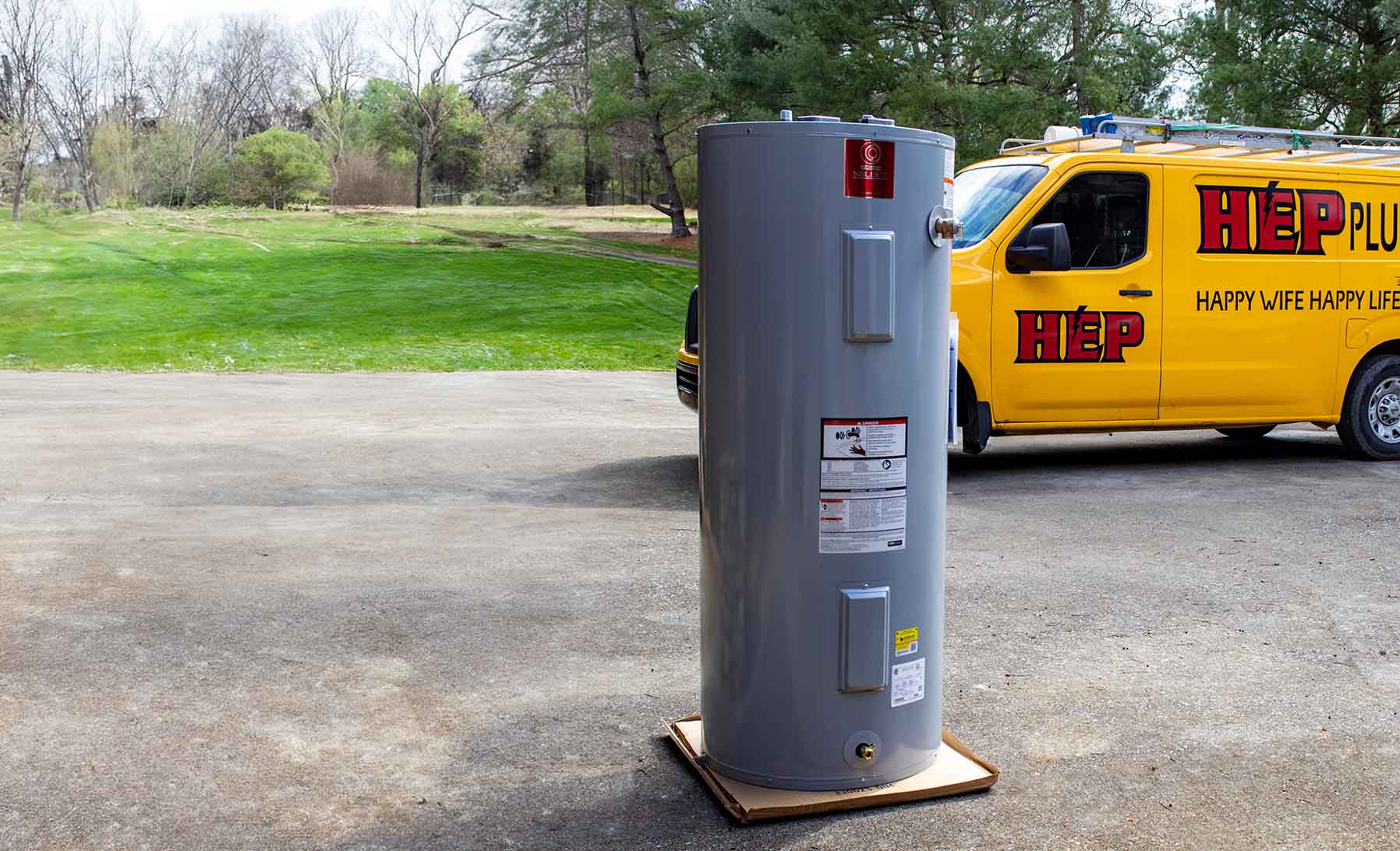- HEP
- Installation And Maintenance

 Installation And Maintenance
Installation And Maintenance
Installation And Maintenance | Tank Water Heater | Plumbing | Crossville
Need hot water you can count on every single morning? The local pros at HEP make it easy for Crossville homeowners to enjoy dependable, energy-smart comfort with professional installation of a new tank water heater. We’ll help you choose the right capacity, haul away the old unit, handle every connection, and leave your space spotless—all while explaining how to maximize efficiency and lower utility costs.
But our job doesn’t stop once the unit is in place. HEP’s licensed plumbers offer routine tune-ups, anode-rod inspections, flushes, and 24/7 emergency repairs to keep your tank water heater running safely for years to come. From rust-colored water to surprise leaks, one call puts our fully stocked service vehicles on the way, so you can get back to warm showers and worry-free living fast.
FAQs
What size tank water heater do I need for my Crossville home?
Tank size is based on the number of people and simultaneous hot-water activities in your household. As a rule of thumb, a 30–40 gallon unit suits 1–2 people, 40–50 gallons works for 3–4, and 50–80 gallons is best for larger families. In Crossville we often recommend leaning toward the larger end because groundwater temperatures can drop into the mid-50s°F in winter, requiring more capacity to reach a comfortable shower temperature. During our on-site estimate we calculate peak demand (gallons per minute) and first-hour rating to verify the correct size before installation.
How long does a typical tank water heater installation take?
For a straight replacement in the same location, most installations in Crossville are completed in 2–4 hours, including draining and hauling away the old tank, setting the new unit, reconnecting water, gas or electric, and testing. If we have to move the heater, upgrade venting, run new electrical lines, or bring the installation up to current code, plan on 4–6 hours. We schedule appointments with a two-hour arrival window and keep common sizes in stock so your hot water can be restored the same day.
Are permits required for water heater replacement in Crossville?
Yes. Cumberland County and the City of Crossville both require a mechanical or plumbing permit for water heater installations to ensure the work meets safety codes for pressure relief, venting, and electrical or gas connections. As a licensed plumbing contractor we secure the permit, coordinate any needed inspection, and provide you with the final approval documentation. Skipping the permit can void homeowners-insurance coverage and may create problems when you sell your home.
How often should I flush my tank water heater and why?
At minimum once a year. Crossville’s municipal water has moderate hardness (about 6–8 grains per gallon), which lets calcium scale settle at the bottom of the tank. Flushing removes sediment, improves heating efficiency, reduces popping noises, and extends the life of the anode rod and tank lining. Homes on well water should flush every six months because iron and mineral content is usually higher. We offer an inexpensive annual maintenance plan that includes draining, refilling, anode inspection, and a full safety check.
What signs indicate my tank water heater needs professional maintenance or replacement?
• Water takes longer to heat or runs out quickly. • Rust-colored water or metallic taste (possible tank corrosion). • Rumbling, popping, or banging noises despite regular flushing. • Moisture, pooling, or rust around the base of the unit. • Temperature-pressure relief (TPR) valve drips continually. • Unit is 10–12 years old (average lifespan in our region). If you notice one or more of these issues, call us. We can often replace a failing anode rod, thermostat, or heating element and add a mixing valve to gain a few more years, but advanced tank corrosion generally means replacement is the safest option.
How can I improve the energy efficiency of my existing tank water heater?
1. Lower the thermostat from the factory setting (usually 140 °F) to 120 °F—enough for comfortable showers and reduced scald risk. 2. Drain a few gallons quarterly to remove sediment, allowing the burner or elements to heat water faster. 3. Insulate the first 3–6 feet of hot-water piping and add a water-heater blanket if the unit is in an unconditioned space like a garage. 4. Install a timer or smart control on electric models so the tank only heats water when you need it. 5. Replace worn anode rods; a deteriorated anode lets corrosion build up and reduces heat transfer. 6. Consider adding a heat-trap nipple kit or installing a high-efficiency heat-pump water heater when it’s time to upgrade. Our technicians can perform all these improvements during an annual maintenance visit and advise you on potential TVA rebates available to Crossville residents.